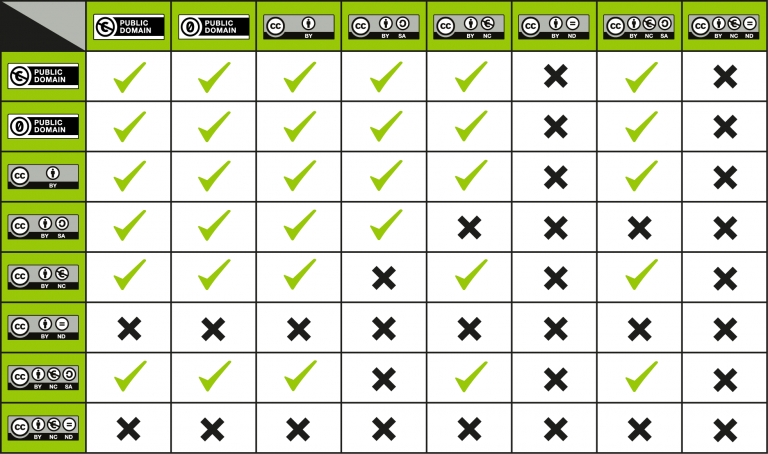See this FAQ on what a Creative Commons license is. See this page for best practices in attributing Creative Commons-licensed works.
Here's an example of a Creative Commons-licensed image and its attribution:

Staffordshire hoard annotated.jpg by David Rowan, Birmingham Museum and Art Gallery is licensed under a Creative Commons Attribution 2.0 license.
Terms to know:

This work, “Spoils” by TCC Library, is a derivative of “Staffordshire hoard annotated.jpg” by David Rowan, Birmingham Museum and Art Gallery, used under a Creative Commons Attribution 2.0 , and is licensed under a Creative Commons Attribution 4.0 license.

Attributions: “Blackbeard’s Spoils,” by TCC Library, is a derivative of Blackbeard image by J. Basire, public domain, and “Staffordshire hoard annotated.jpg” by David Rowan, Birmingham Museum and Art Gallery, used under a Creative Commons Attribution 2.0 , and is licensed under a Creative Commons Attribution 4.0 license.
“Temples Collection” by TCC Library is licensed under a CC Attribution 4.0 International (CC BY 4.0) license.
Attributions in order from left to right, top to bottom: Vietnam, Temple in Chau Doc 2.jpg by Vyacheslav Argenberg is licensed under a Creative Commons Attribution 4.0 license.
Puskhar Hindu Temple (1580717983).jpg by Francisco Anzola is licensed under a Creative Commons Attribution 2.0 license.
Luxor Temple, Luxor, Egypt.jpg by Vyacheslav Argenberg is licensed under a Creative Commons Attribution 4.0 license.
Adaptation, derivative, and remix all mean the same thing and can be used interchangeably in the Creative Commons context, though “remix” likely means combining or taking from multiple works to create something new. See also, “When is my use considered an adaptation?”
If using more than one CC-licensed work to remix, this compatibility chart may be helpful:

“CC License Compatibility Chart” is licensed under a CC BY 4.0 license
The above chart can help in checking if two works are compatible to “remix.” For example, you can’t remix a BY work with a BY-NC-ND work outside of personal use unless an exception or limitation applies.
Licensing considerations for collections vs remixes/adapted works/derivatives:
Unless otherwise noted, text adapted from Creative Commons Certificate for Educators, Academic Librarians and GLAM by Creative Commons, licensed under a CC Attribution 4.0 International (CC BY 4.0) license. “Using CC Licenses and CC-Licensed Work” blog post and associated images by TCC Library are licensed under a CC Attribution 4.0 International (CC BY 4.0) license.
Metro Campus Library: 918.595.7172 | Northeast Campus Library: 918.595.7501 | Southeast Campus Library: 918.595.7701 | West Campus Library: 918.595.8010
email: Library Website Help | MyTCC | © 2025 Tulsa Community College
0 Comments.